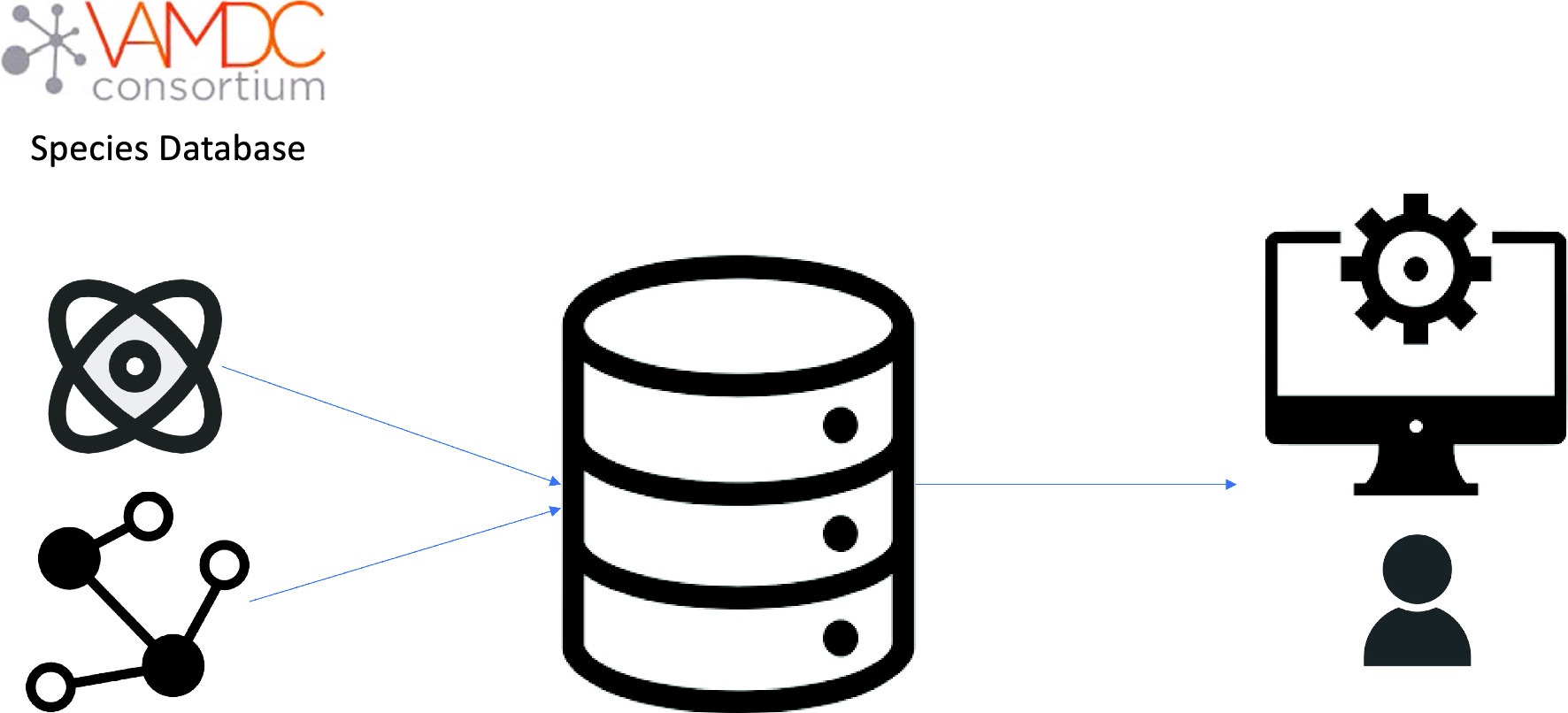https://doi.org/10.1140/epjd/s10053-024-00863-1
Regular Article
The VAMDC species database
LERMA, Observatoire de Paris, PSL Research University, CNRS, Sorbonne University, UPMC Univ Paris 06, 5 Place Janssen, 92190, Meudon, France
a
carlo-maria.zwolf@observatoiredeparis.psl.eu
Received:
30
January
2024
Accepted:
7
May
2024
Published online:
2
July
2024
The Virtual Atomic and Molecular Data Centre (VAMDC) is a distributed infrastructure combining heterogeneous atomic and molecular (A &M) data from more than 41 autonomous databases. In this paper, we present the Species Database, a scientific web service which is a central catalogue providing a useful information on A &M species from all the VAMDC databases. The Species Database is one the key pillars in the technical architecture of the VAMDC, and from the user’s point of view, it is the service to simply and immediately answer the question: Does VAMDC have data on my molecule/atom of interest? This work is structured as follows: After recalling the aims and needs that led to the construction of the Species Database, we will describe how it works, with increasing levels of complexity. First, we will describe how any user, even those with no knowledge of VAMDC, can easily use the dedicated web interface to search for and extract information. Then we will describe an API that more advanced users can use to interact with the Species Database in a more programmatic way. Two appendices cover some technical aspects that are not necessary for using the Species Database, but which may be of interest to readers wishing to understand implementation details and low-level technical subtleties.
Copyright comment Springer Nature or its licensor (e.g. a society or other partner) holds exclusive rights to this article under a publishing agreement with the author(s) or other rightsholder(s); author self-archiving of the accepted manuscript version of this article is solely governed by the terms of such publishing agreement and applicable law.
© The Author(s), under exclusive licence to EDP Sciences, SIF and Springer-Verlag GmbH Germany, part of Springer Nature 2024. Springer Nature or its licensor (e.g. a society or other partner) holds exclusive rights to this article under a publishing agreement with the author(s) or other rightsholder(s); author self-archiving of the accepted manuscript version of this article is solely governed by the terms of such publishing agreement and applicable law.





